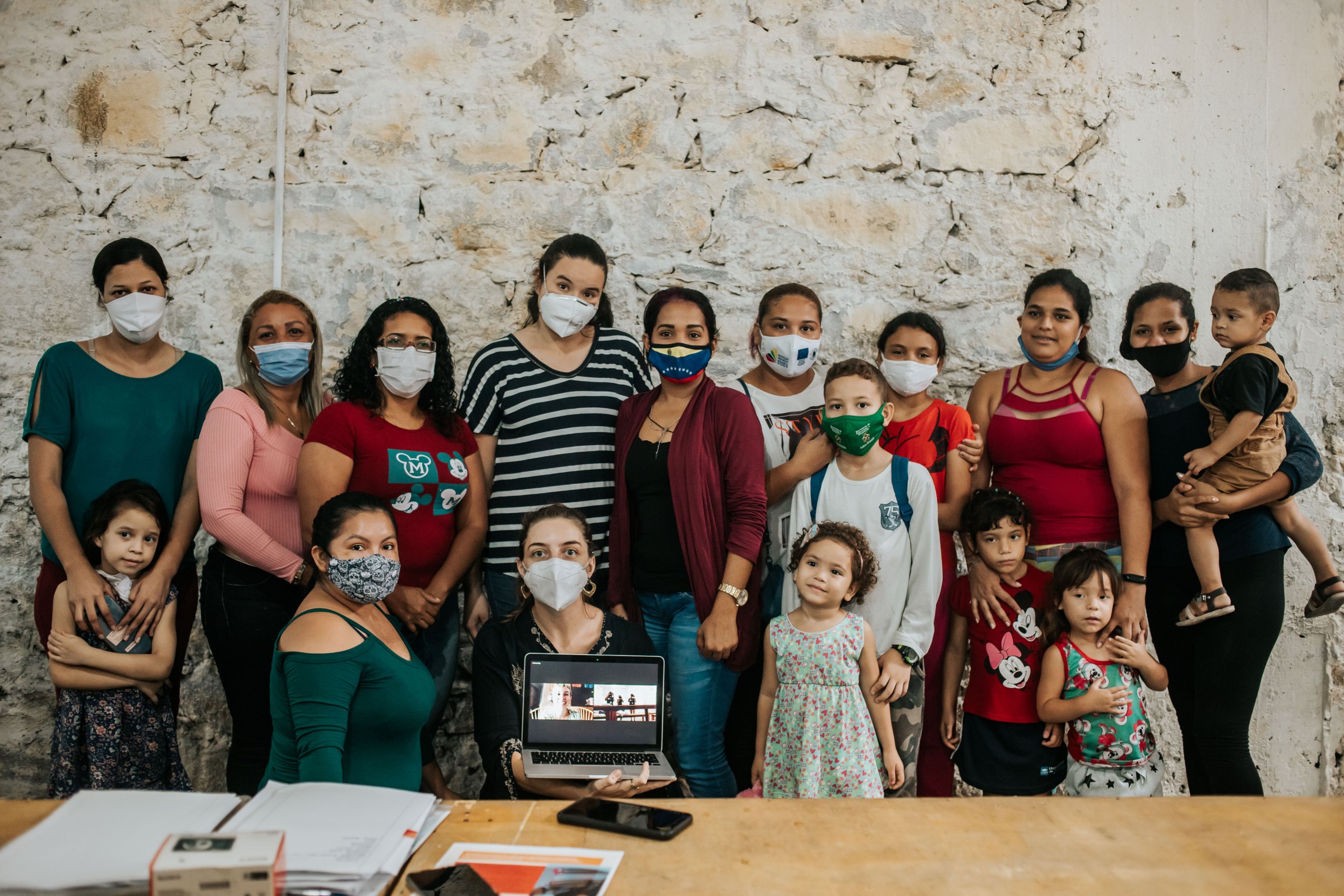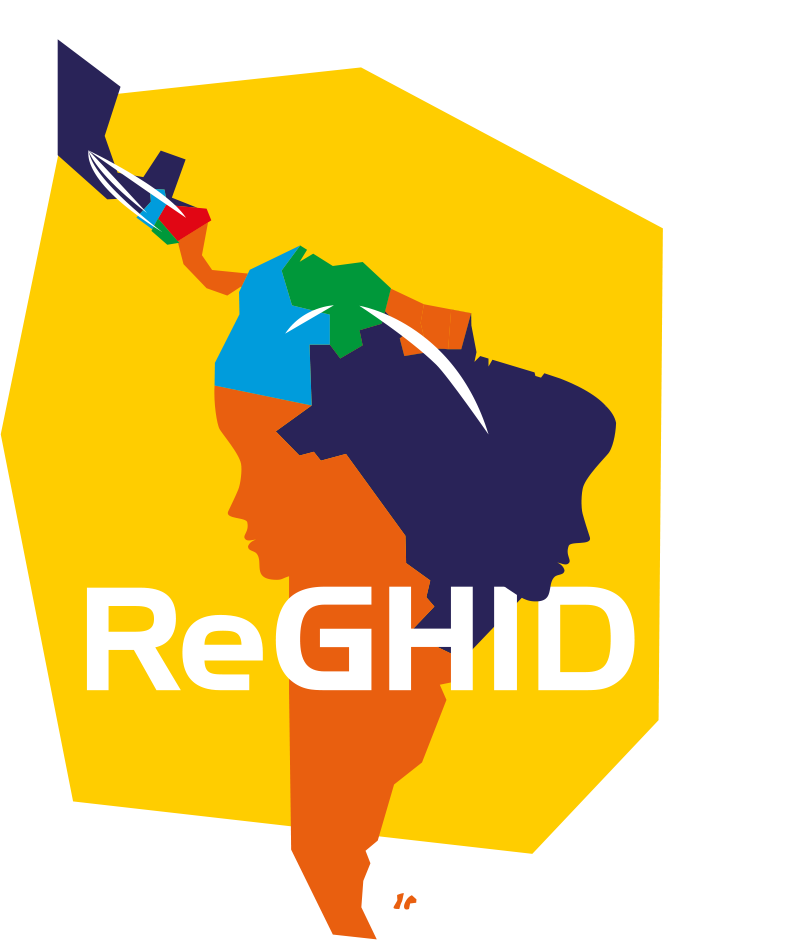Photovoice with displaced Venezuelan women in Brazil: first thoughts on fieldwork activities

By Tallulah Lines, University of York
Arts-based methodologies are becoming increasingly popular within migration research, valued for their potential to traverse and transcend cultural, linguistic and academic borders; to facilitate more egalitarian research; and to provide richer and multi-layered data regarding the lived experiences of people on the move (O’Neill, 2011; Oliveira, 2019; Jeffery et al, 2019). Keen to involve migrant women and adolescent girls in Brazil and Mexico in co-producing research carried out within ReGHID in a meaningful and appropriate way, we have chosen to use the arts-based methodology of photovoice as part of our study. Photovoice was developed as a way to promote a social justice perspective within health research, especially with marginalised groups (Hergenrather et al, 2009; Evans-Agnew and Rosemberg, 2016). In the context of ReGHID, participants will take photographs in response to the theme of sexual and reproductive health, then share and discuss them in a focus group; the photographs taken by participants will be collated in a photobook to be shared with NGOs, policymakers and other interested parties.
In May 2021, we began working on Photovoice with women from the Warao indigenous community sheltered in Tarumã Açu II, in Manaus, Amazonas, Brazil. Here, we share some very early reflections on conceptualising sexual and reproductive health, and some theoretical considerations on Photovoice as a methodology with the Warao women.
Researching sexual and reproductive health: challenges and motivations
Discussing sexual and reproductive health can be challenging. Sexual and reproductive health is so deeply personal. Our experiences of periods, sexually transmitted infections, pregnancy and abortion, violence and so on are things which we have learned are ‘private’ matters and, because of societal taboos or indeed legal context, there can be shame or unwillingness around talking about these issues. They might also trigger traumatic memories, which we do not want or are not able to talk about freely. Furthermore, across cultures and communities, there are vastly different understandings of what sexual and reproductive health comprises, leading to differences in identifying issues and challenges related to sexual and reproductive health. This was particularly the case of Warao women in Manaus, as will be better described below.
Despite the difficulties in talking about and conceptualising sexual and reproductive health, receiving information, access and attention relating to all elements of sexual and reproductive health is a human right, including during the migration journey. Having dignity and autonomy over our bodies is the starting point to living empowered lives and reaching our full potential. Even if lip service is paid to this by governments and policymakers, unfortunately, in practice, girls’ and women’s sexual and reproductive health needs are repeatedly ignored, denied, and in the worst cases, policies are created which actively disadvantage particular groups of girls and women. This is amplified in the case of women and girls experiencing axes of discrimination because of their intersectional characteristics including migrant status, race or ethnicity, age, dis/ability and poverty.
Photovoice as a decolonising methodology
For many indigenous peoples, ‘research’ is probably one of the dirtiest words’ in their vocabulary (Smith, 1999: 1). The term conjures up centuries of invasive, dangerous, racist and colonialist practices, ‘in which knowledge about indigenous peoples was collected, classified and then represented in various ways back to the West, through the eyes of the West’ (ibid). For years, research has had negative impact within indigenous communities – both when it informs policy, or when it resoundingly fails to:
‘The greater danger, however, was in the creeping policies that intruded into every aspect of our lives, legitimated by research, informed more often by ideology….Taking apart the story, revealing underlying texts,and giving voice to things that are often known intuitively does not help people to improve their current conditions. It provides words, perhaps, an insight that explains certain experiences – but it does not prevent someone from dying.’ (Smith, 1999: 3).
We can see, then, that research is powerful, especially research with implications for health or medical policy with indigenous communities. Using participatory or emancipatory methodologies is seen as a way of decolonising research because it creates more equal power relations within the research process, aiming to empower rather than exploit research participants. Photovoice is one such methodology and indeed, arguably, given that the relationship between photography and indigenous peoples is also fraught with racist and colonialist history and practices, it is potentially a particularly powerful method when working with indigenous peoples. Photography has been used historically as a form of framing, telling a story about the ‘Other’, and constructing a narrative through the violence of imperialism, which takes agency away from the photographed and gives it only to the photographer (Sealy, 2018. See also Halba, 2009). In photovoice, the agency is returned to the (indigenous) research participant and photographer.
Early reflections
So far, our early work in Tarumã Açu II has provided several points for reflection. First, the fundamental differences in conceptions of health, medicine and healthcare held between the Warao women and us as researcher and photographer are crucial to keep in mind. Understandings of health and illness are informed by beliefs in witchcraft and shamanism among the Warao people (ACNUR, 2021; REGHID interviews). In contrast, we grew up in societies where health and illness are based on Western, scientific medicine. Added to this is different access to – and inclusion within or exclusion from – institutions and resources which inform how we understand sexual and reproductive health, and the language we use to discuss it. These institutions include formal education, public health services, and organisations which use rights-based terminology to describe sexual and reproductive health.
To address these differences, we have taken more time and care in a way that would allow a deeper, more intimate connection with the Warao women. More technical concepts involving photography, as well as sexual and reproductive health needed a different approach and more time, both for the Warao women involved – some of which who had never even seen a professional camera before – and the researchers. In order to discuss this with Warao women, we spoke more generally about women’s health, rather than sexual and reproductive health as a pre-defined notion. Furthermore, the parameters for discussion on women’s health are led at this early stage by the Warao women. For instance, the challenges to mothering that some have experienced as a result of poverty do not necessarily align with our preconceived ideas of sexual and reproductive health, and for this reason, it is crucial to allow ample space and time for discussion, as both Warao women are able to better understand the methodology and communicate through photography, as well as researchers can better understand the Warao women’s own cosmology.
Secondly, we are motivated by the emancipatory potential of photovoice, but we must be cognisant about some of the unavoidable limitations of its decolonising potential. While the participants will take photographs that reflect their own interpretations of challenges to sexual and reproductive health, and in this sense they are using their voice and expressing their own priorities, the need to adhere to the overall theme could be seen as limiting. The core output of the photovoice project will be the photobook to be shared with policymakers and other interested parties; to ensure impact in influencing policymaking, it will be necessary to align it with the concepts, language and parameters of health policymaking.
It is too early to reach conclusions about how to mitigate practices which could be seen as colonialist, albeit obviously unintentional. However, it is something we must continue to be aware of as the project develops and when we come to write up the results of the research. So far, in her sessions with the Warao women, Bruna has encouraged participants to get used to the cameras and the potential for creative expression through photography – for many of the women, it is the first time they have used cameras. While taking pictures of their grandchildren or the nature around them is not necessarily related to the theme of sexual and reproductive health, it is an important part of the process of developing confidence and therefore finding a voice as a photographer. Again, we feel it is important to allow the space and time for this, if we are to be able to lock into the decolonising potential of the methodology.
We continue to work on Photovoice with the Warao and other groups of Venezuelan women and adolescents on the move, and are looking forward to seeing the results of all the group projects together.
Update : Our Photovoice activities and photos have been showcased on the ‘Narrativas Visuales’ webpage
References:
ACNUR (2021). Os Warao No Brasil. [Online] Available at: https://www.acnur.org/portugues/wp-content/uploads/2021/04/WEB-Os-Warao-no-Brasil.pdf [Accessed 1 July 2021]
Evans-Agnew, R.A. and Rosemberg, M.S. (2016). Questioning Photovoice Research: Whose Voice?Qualitative Health Research 26 (8) pp. 1019–1030
Halba, H. (2009). Creating image and telling stories: decolonising performing arts and image-based research in Aotearoa/New Zealand. About Performance 9 pp. 193-211.
Hergenrather, K.C. et al (2009). Photovoice as Community-Based Participatory Research: A Qualitative Review American Journal of Health Behaviour 33 (6) pp.686-698
Jeffery, L et al (2019). Creative engagement with migration. Crossings: Journal of Migration and Culture 10 (1) pp. 3-17.
Oliveira, E. (2019) The personal is political: a feminist reflection on a journey into participatory arts-based research with sex worker migrants in South Africa. Gender & Development 27 (3) pp. 523-540
O’Neill, M. (2011). Participatory methods and critical models: Arts, migration and diaspora. Crossings: Journal of Migration and Culture 2 (1), pp. 13–37.
Sealy, M. (2018). Decolonising the Camera: photography in racial time. London: Lawrence and Wishart.
Smith, L.T. (1999). Decolonizing Methodologies. London: Zed Books.
